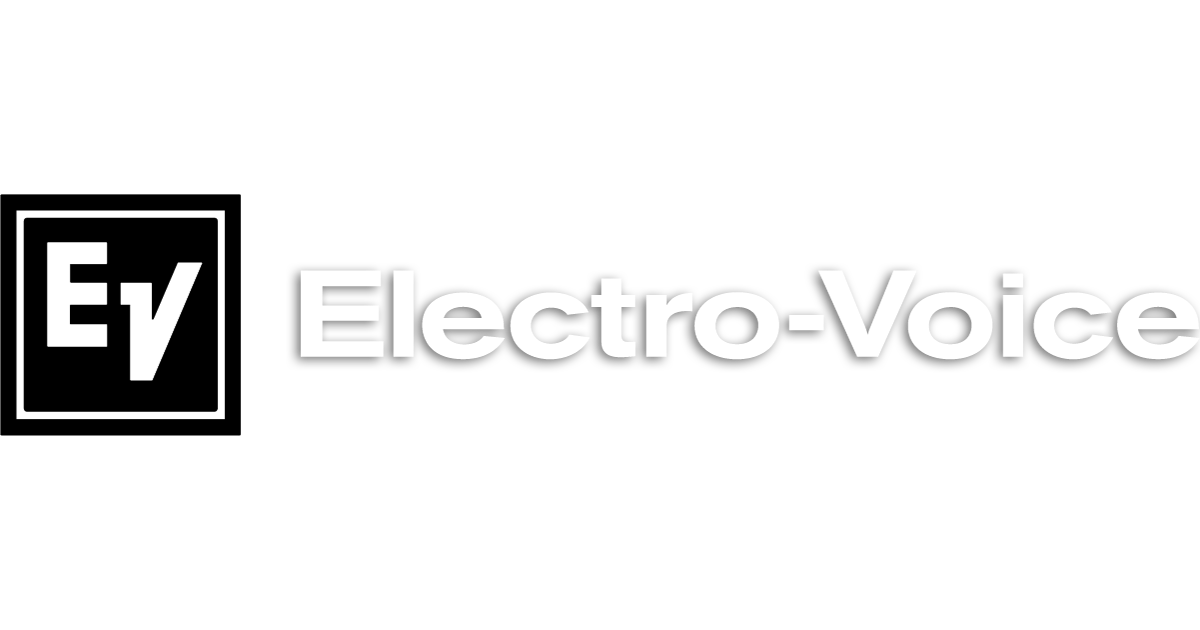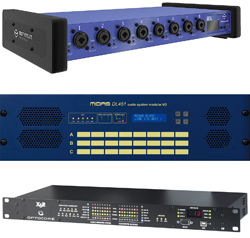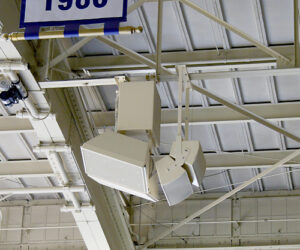In the not-too-distant past, professional touring systems consisted of two or three remotely located consoles, tied to a combination of low-level passive or dynamic input sources (along with some active or phantom-powered inputs), connected by long lengths of multicore snakes, through a system of transformer-isolated or (yikes) passive hard-wired splitters.
The effect on low-level signals with multiple consoles and long lengths of multi-core is a reduction in signal level, higher noise floor and less bandwidth.
The most vulnerable points for distortion to enter a sound system are its electronic stages with the highest gain – microphone preamps and power amps. The character of a sound system is largely determined by the quality of these two largest gain stages.
The ultimate solution is embraced by today’s digital audio distribution and mixing systems which place their inputs close to the source, eliminating loading effects by providing quality mic-pres and digital conversion near the source, controlled from the mix position.
All the best digital consoles provide remotely controlled mic-pres, some of them beginning as digital snakes with mix engines added later.
There are numerous straight multi-channel mic-pres on the market. FireWire interfaces that are easily be attached to computer- based recording systems, but can’t provide remote control from live consoles.
Additionally there are many with ADAT I/O which can even be used with some digital snakes, like the Aphex Anaconda.
Ultimately though, control from a mix position remotely located from the microphone preamps is a requirement for live sound. Actually, any digital console’s remote stage box is a multichannel remotely-controlled microphone pre-amp.
Options for inter-operability between these systems and third-party equipment include MADI, CobraNet, EtherSound and Dante.
We expect to see more of the latter in the near future.
Eight Is Enough?
The number of inputs in multi-channel remote microphone preamps is generally eight or a multiple of that number. Not only is eight a musical number, but it is building block modularity for all consoles.
Several console manufacturers provide mix capacity in excess of the number of mic preamps that come with the console. Most Yamaha digital consoles provide a wide variety of input (and output) expansion through the use of their MY card slots.
Analog outputs provide local monitoring of a pre-amp’s signals and can save the expense of a mic splitter for a monitor desk, recording feeds or broadcast tie lines. Additional connectors in parallel with the main XLRs can be used as a low-cost passive split or provide contractors with easier terminations for installations.
Most digital consoles and snakes operate at 48 kHz, usually good enough for live sound, though there are a few notable 96 kHz products.
The ability of equipment to operate at higher sample rates helps make them future-proof or more acceptable in a recording chain. While most are able to accept external digital word clocks, better products often have superior onboard clocking, providing a benefit to the sound quality of digital consoles they’re connected to beyond the improvement from the performance of the mic-pre itself.
The console of yesterday was a unified enclosed analog system, to which various outboard electronics were added or inserted.
The console of tomorrow is control surface for a mix engine, with distributed inputs and outputs.
Not all manufacturers will have to excel at all of these products. In fact, some winners likely will specialize in one of the disciplines.
Many digital mixing systems can even benefit from additional specialized microphone preamps.
Take our Real World Gear Gallery Tour of the latest preamp models and designs.
















